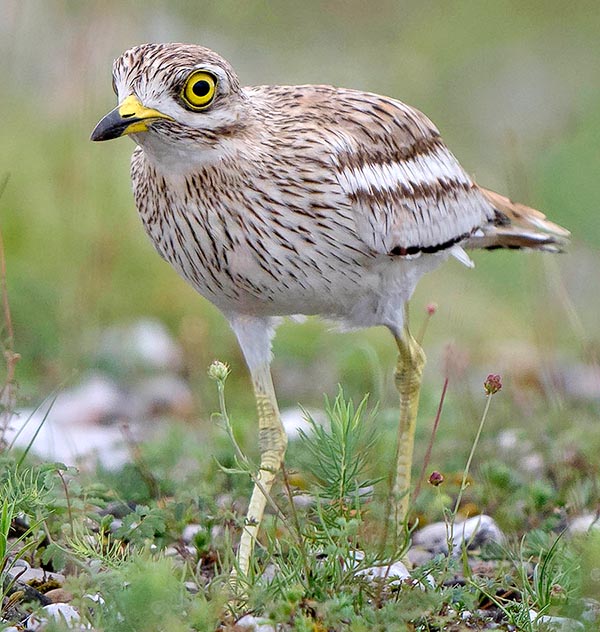The Stone Curlew: Burhinus Oedicnemus Saharae
Share
The Stone Curlew, scientifically known as Burhinus oedicnemus saharae, is a fascinating bird species belonging to the family Burhinidae within the order Charadriiformes. This article delves into the characteristics, habitat, behavior, and conservation status of this unique bird, providing insights for birdwatchers and nature enthusiasts alike.

Taxonomy and Classification
The Stone Curlew is classified under the following taxonomic hierarchy:
- Order: Charadriiformes
- Family: Burhinidae
- Suborder: Charadrii
- Species: Burhinus oedicnemus
- Subspecies: saharae
- Type: Oedicnemus oedicnemus saharae Reichenow, Journ. f, Orn., 42, 1894, p. 102. (Tunis)
This subspecies is primarily found in Northern Africa, extending its range from Morocco to Egypt, and south to the Tademat Plateau, Tuareg Mountains, and Faiyum. It also inhabits regions in Crete, Cyprus, and southern Palestine, reaching as far south as Sinai, where it intergrades with other forms in Iraq.
Physical Characteristics
The Stone Curlew is a medium-sized bird, characterized by its long legs and large eyes, which are adapted for nocturnal activity. The plumage is predominantly brown with streaks and spots that provide excellent camouflage against the rocky and sandy environments it inhabits. The bird's distinctive yellow eyes and long, pointed wings make it easily recognizable.
Habitat
Stone Curlews prefer open, dry habitats such as steppes, grasslands, and agricultural fields. They are often found in areas with sparse vegetation, which allows them to spot predators easily. Their range across Northern Africa includes various terrains, from arid deserts to more temperate regions, showcasing their adaptability to different environments.

Diet
The diet of the Stone Curlew primarily consists of insects, small invertebrates, and occasionally plant material. They are known for their foraging behavior, often hunting at dusk or dawn when they are most active. Their keen eyesight allows them to detect movement in low light conditions, making them effective hunters.

Behavior
Stone Curlews are primarily nocturnal, which helps them avoid daytime predators. They are known for their distinctive calls, which can be heard during the night. Their behavior includes a unique display during the breeding season, where males perform elaborate courtship rituals to attract females. They are also known to be quite territorial, especially during nesting.
Reproduction
The breeding season for Stone Curlews typically occurs in the spring. They build their nests on the ground, often in well-camouflaged locations to protect against predators. The female usually lays two to three eggs, which both parents incubate. After hatching, the chicks are precocial, meaning they are relatively mature and mobile shortly after birth, allowing them to forage for food with their parents.
Conservation Status
The conservation status of the Stone Curlew varies by region. While some populations are stable, others face threats from habitat loss due to agricultural expansion and urban development. Conservation efforts are essential to ensure the survival of this unique bird, particularly in areas where its habitat is under threat.
Birdwatching Tips
For birdwatchers interested in observing the Stone Curlew, the best time to spot them is during the early morning or late evening when they are most active. Look for them in open fields or near water sources in their range. Binoculars and a good field guide can enhance the experience, allowing for a closer look at their fascinating behaviors and characteristics.
The Stone Curlew, with its unique adaptations and behaviors, plays a vital role in its ecosystem. As a predator of insects and small invertebrates, it helps maintain the balance within its habitat. Observing this remarkable bird not only enriches our understanding of avian life but also highlights the importance of conserving the diverse environments they inhabit.
